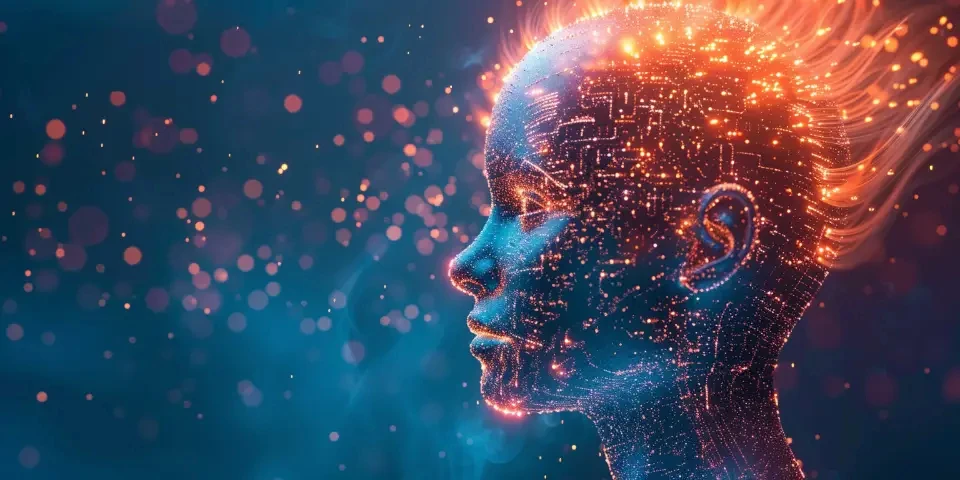AI for All Bridging the Digital Divide through Inclusive Technology
Introduction:
With the rapid advancements in Artificial Intelligence (AI), there is an opportunity to bridge the digital divide and provide inclusive technology that benefits all sections of the society. In this article, we will explore how AI can be instrumental in creating a more equitable digital landscape.

1. Enhancing Accessibility:
AI-powered technologies can help individuals with disabilities access digital platforms and information. Speech recognition tools can convert spoken words into text, enabling those with hearing impairments to participate in online communication. Additionally, computer vision algorithms can provide image descriptions for blind users, making visual content accessible.
Case Study: Microsoft's Seeing AI is an app that narrates the world for the visually impaired, using AI to recognize objects, read text, describe surroundings, and even identify people.
2. Personalized Learning:
AI can revolutionize education by catering to the individual needs and learning pace of each student. Intelligent tutoring systems can provide customized learning paths, adapt based on learner responses, and offer personalized feedback. This ensures that students receive the right support and resources, irrespective of their location or background.
Case Study: Duolingo, a popular language learning platform, uses AI algorithms to personalize lessons and create adaptive learning experiences for millions of users.
3. Bridging Language Barriers:
Language barriers can be a significant obstacle to accessing information and services online. AI-powered translation tools can instantly translate text, speech, and even sign language, breaking down language barriers and enabling communication across diverse linguistic backgrounds.
Case Study: Google Translate utilizes AI to provide translations between over 100 languages, making it easier for people around the world to communicate.
4. Improving Healthcare:
AI in healthcare can contribute to bridging the gap in access to quality medical services. Machine learning algorithms can analyze medical data, aid in early diagnosis, and suggest personalized treatment plans. Additionally, AI-powered telemedicine platforms can bring healthcare services to remote areas without sufficient medical facilities.
Case Study: IBM Watson Health uses AI to analyze medical images and diagnostic data, assisting healthcare professionals in making more accurate and timely diagnoses.
5. Employment and Economic Opportunities:
AI can help create new job opportunities and empower individuals with skills required for the future. AI-powered career platforms can provide personalized job recommendations and upskilling opportunities based on individual profiles. This can be especially beneficial for marginalized communities and those facing job displacement.
Case Study: LinkedIn Learning offers AI-based recommendations for learning resources and skill development courses, helping individuals stay relevant in a rapidly changing job market.
6. Ethical Considerations:
As AI becomes more pervasive, addressing ethical considerations is crucial. It is essential to ensure that AI algorithms are unbiased and do not perpetuate existing societal inequalities. Transparency and accountability in AI development, including responsible data handling and algorithm design, should be prioritized to avoid exacerbating the digital divide.
- How can AI help in reducing educational inequalities?
- AI can level the playing field in education by providing personalized learning paths, adaptive tutoring, and equal access to educational resources regardless of location or background.
- Can AI really bridge language barriers effectively?
- AI-powered translation tools have made significant strides in breaking down language barriers, although challenges still exist in accurately capturing nuances and cultural contexts.
- What steps can be taken to ensure ethically responsible AI development?
- Ethical guidelines, diverse representation in AI development teams, transparency in data usage, and ongoing evaluation of algorithms can help ensure responsible AI development.
Conclusion:
AI has the potential to create a more inclusive digital world by addressing various barriers and disparities. By enhancing accessibility, personalizing learning, bridging language gaps, improving healthcare, generating economic opportunities, and prioritizing ethical considerations, AI can bridge the digital divide and empower individuals and communities worldwide.
References: - Microsoft Seeing AI: https://www.microsoft.com/en-us/ai/seeing-ai - Duolingo AI: https://blog.duolingo.com/duolingos-ai-driven-tutoring-experience/ - Google Translate: https://translate.google.com/ - IBM Watson Health: https://www.ibm.com/watson-healthWelcome to Wemate AI, the ultimate place to chat about your undying love for bubble wrap. Prepare for deep conversations about why it brings joy like no other!
Explore your companion in WeMate